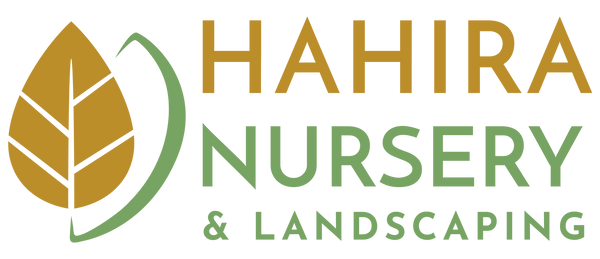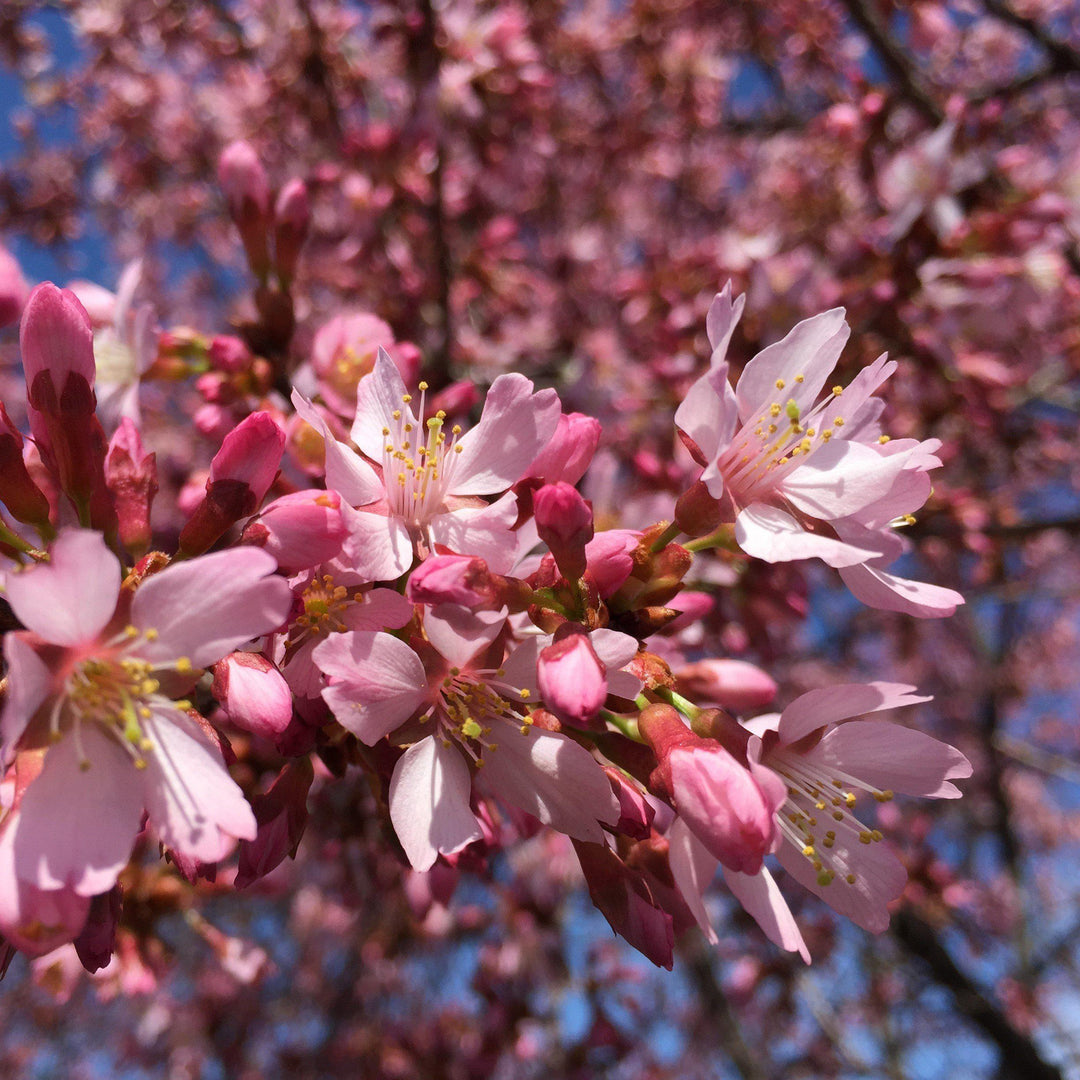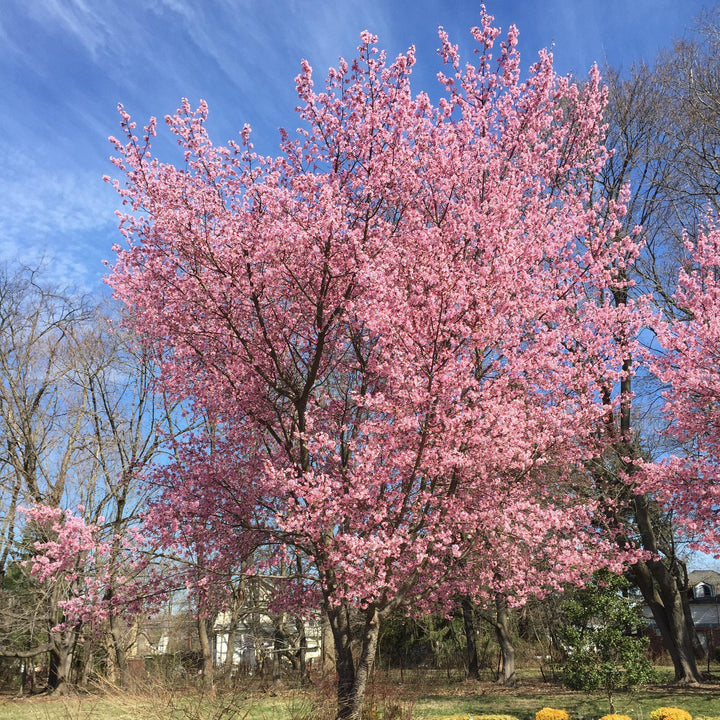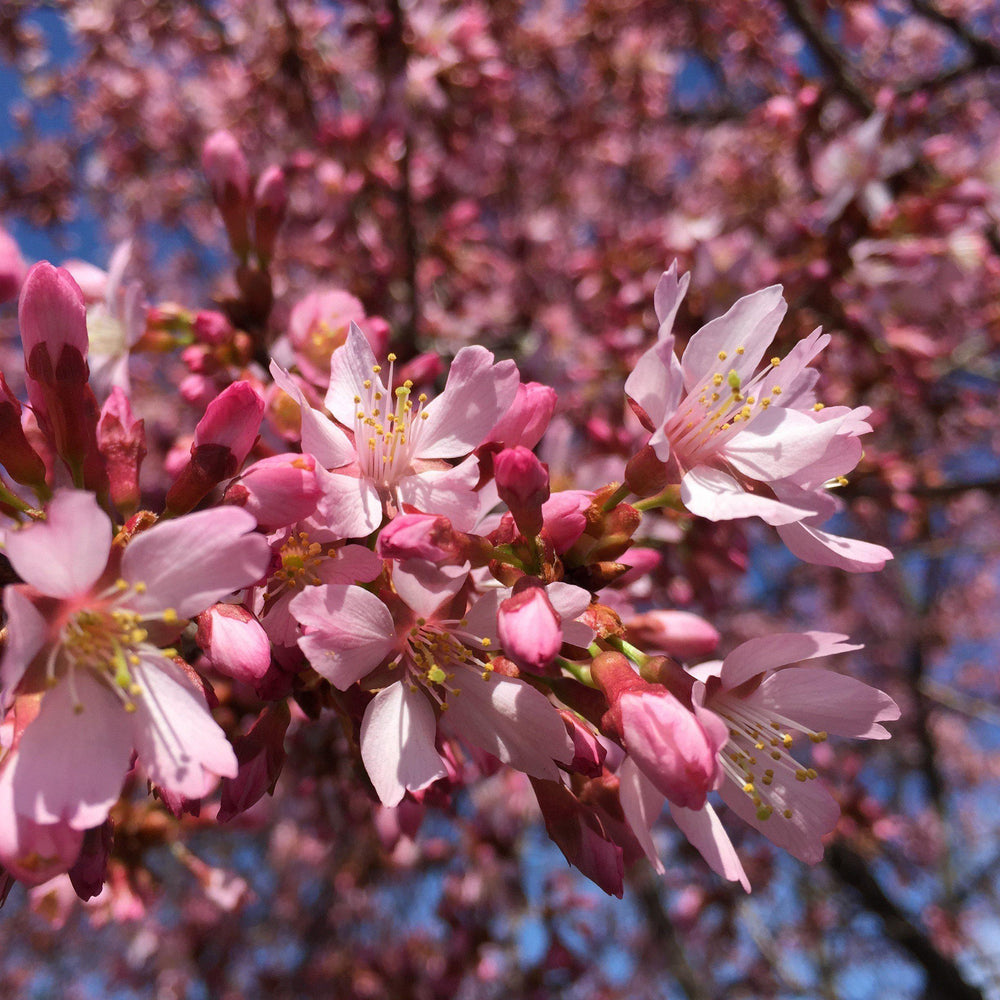Okame Flowering Cherry
Prunus x incam 'Okame'
- In stock, ready to ship
- Backordered, shipping soon
- Locally Grown
-
The Okame Flowering Cherry is a deciduous tree that typically grows to a height of 20-30 feet (6-9 meters) with a spread of 15-25 feet (4.5-7.5 meters). It has a rounded crown and a relatively short trunk. The bark is smooth and reddish-brown when young, but it becomes darker and develops horizontal lenticels as the tree matures.
-
Flowers: The Okame Cherry produces abundant clusters of vibrant pink flowers in early spring. The flowers are single or semi-double, meaning they have a single or few layers of petals. They are about 1 inch (2.5 cm) in diameter and cover the branches, creating a stunning display. The blossoms attract bees and other pollinators.
-
Foliage: The leaves of the Okame Cherry are oval-shaped and emerge bronze or reddish-purple in the spring. As they mature, they turn dark green and provide a lovely backdrop for the pink flowers. In the fall, the foliage may develop shades of yellow, orange, or red before dropping.
|
Type: |
|
|
Origins: |
Japan |
|
Height: |
15’ - 25’ |
|
Spread: |
15’ - 20’ |
|
Spacing: |
18’ |
|
USDA Hardiness Zone: |
6 - 8 |
|
Culture: |
|
|
Bloom Color: |
Pink |
|
Season of Interest: |
MAINTENANCE NEEDS: Medium Maintenance. Pests and diseases can be a problem. Watch for aphids, scale, borers, caterpillars, beetles and spider mites. Potential diseases include leaf spot, dieback, leaf curl, powdery mildew, root rot, and fireblight. Cherries have weak wood and are susceptible to breakage.
LANDSCAPE USES: Accents or Group Plantings, Borders, Woodland Gardens, Naturalized Areas, Wildlife Gardens, and Shade Tree.
COMPANION PLANTS: Viburnum, Lilac, Butterfly Bush
IMAGES: (Tree) Famartin, 2016-03-12 10 26 24 Okame Cherries blooming at the Lawrence Road Presbyterian Church in Lawrence, New Jersey, CC BY-SA 4.0
(Flowers) Famartin, 2015-04-13 10 31 19 Okame Cherry flowers along 5th Street in Ewing, New Jersey, CC BY-SA 4.0
(Bark) Photo by David J. Stang, Prunus x incam Okame 1zz, CC BY-SA 4.0
(Leaves) Photo by David J. Stang, Prunus x incam Okame 4zz, CC BY-SA 4.0
Hahira Nursery takes pride in growing high-quality, fresh, healthy plants and ensuring they are delivered safely, on time, and with little to no damage so they are ready to be planted.
Despite all of our best efforts, once the plants have left our nursery, there are many variables outside of our control that can cause plants, flowers, trees, shrubs, or grasses to not thrive as they should. Plants are living organisms and are susceptible to a number of different environmental and care factors that are outside of our control.
Our goal is to build strong relationships with our customers and we always want to make things right, but we cannot always guarantee what happens once the plants are outside of our nursery, how you care for the plants, if they’re in the correct growing zones, weather damage, soil conditions, insect infestations, etc..
If you have any questions or concerns about a purchase you’ve made, please email us at info@hahiranursery.com and we will work with you on a case-by-case basis to the best of our ability.
Please note that all living organisms are not identical and their coloring, size, and shapes may differ from what you see online in our store. Each plant has its own characteristics that are impacted by the time of year, growth cycle, weather, and other elements which will cause them to look different than their photos.











